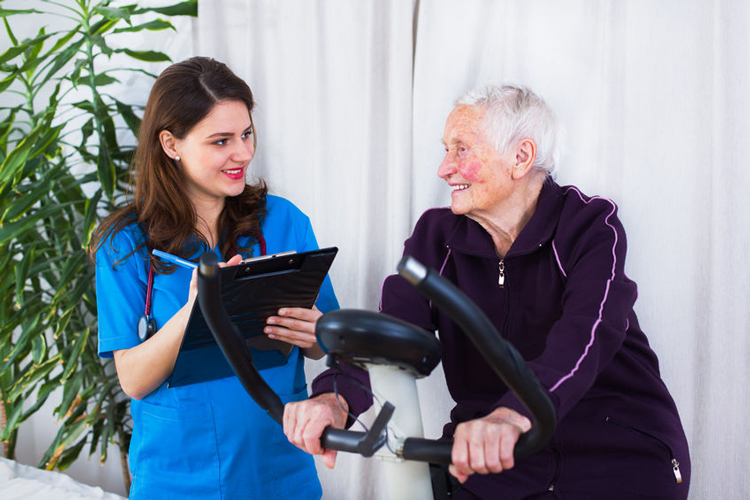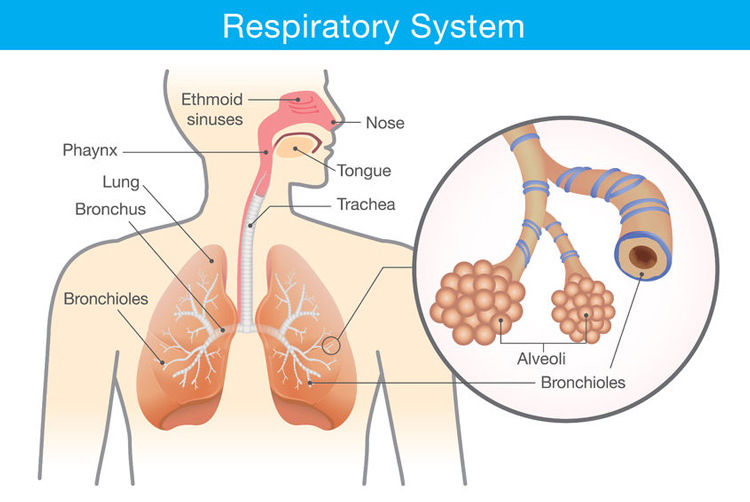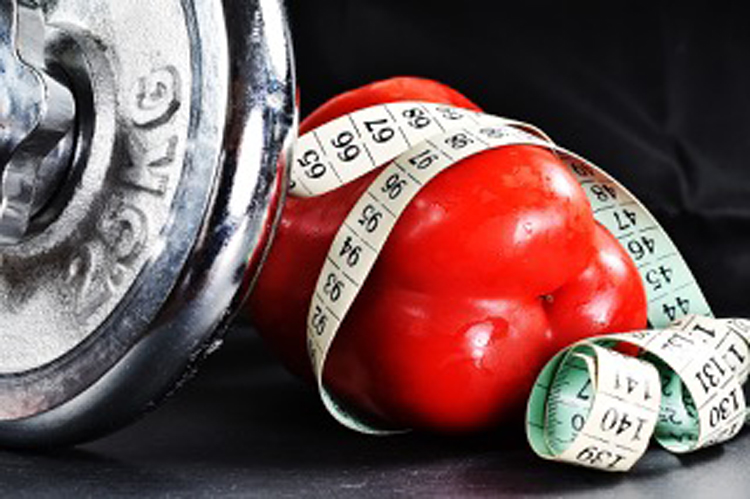June 2018 NewsBlast | Article 3 [copy]
21 Jun 2018 / joe
6 Important Things to Know when Working with Cancer Patients and Survivors.
By Fitness Learning Systems
 Copyright: Lighthunter / 123RF Stock Photo
Copyright: Lighthunter / 123RF Stock Photo
Cancer is the second leading cause of death in the United States.
Cancer is the second leading cause of death in the United States. Today, survival trends are improving, however, the number of deaths caused by cancer has increased. More than one-third of yearly cancer deaths are related to diet and physical activity habits. Ironically, the same behaviors that contribute to decreasing the risk of cardiovascular disease such as being physically active, maintaining a healthy weight, and consuming a healthy diet can also significantly reduce the risk of developing cancer.
Exercise provides a significant role in the prevention and control of cancer. The U.S. Department of Health and Human Services recommends that those with cancer should be as active as possible considering their current health and capacity, but to avoid inactivity. As with any chronic disease, approval from a physician is recommended before any exercise program prior to, during, or after treatment. Recent data supports that exercise may increase survival rates for both breast and colon cancer survivors, and there is evidence that the risk of cancer reoccurrence may be decreased when physically active during and after treatment. Exercise also plays a significant role in recovery and long-term health.
Overall, exercise comes highly recommended before, during, and after treatment to benefit the cardiovascular system and assist with muscle and bone strength; all of which can be challenged with treatments.
The most frequent cancer site is the skin. If you see moles or abnormal skin spots on your client, encourage them to see their physician immediately. Skin cancer can be deadly.
Here are 6 things to know when working with cancer patients and survivors: (ACSM Guidelines for Exercise Testing and Prescription, 2014)
- Exercise is not recommended if the client is on intravenous chemotherapy days or within 24 hours of treatment.
- No exercise prior to a blood draw.
- No exercise if the client has a tissue reaction to radiation therapy.
- No exercise if there is any bone, back, or neck pain of recent origin or any unusual muscular weakness.
- No exercise if fever greater than 101°F or nausea, vomiting, or diarrhea within 24-36 hours.
- Avoid high-intensity resistance training for muscles located under or near a port or a PICC line. (A port is an implanted venous access port or totally implanted port used to insert treatments like chemotherapy into the bloodstream and a PICC line is a permanently inserted flexible tube for long-term intravenous medicine or treatments.) A PICC line is inserted in the upper arm or the fold in the elbow. The port is normally implanted under the skin in the upper chest (pectoralis area), but can be inserted in the back of the upper arm (triceps area) or in the abdominal area.
For more information about working with clients with chronic disease, see the Fitness Learning Systems Chronic Disease and Exercise Specialist Certificate Program. Specialize and become recognized as a medical fitness professional. Fitness Learning Systems is an IACET accredited continuing education provider.
Link to Courses Page: Cancer Patients and Survivors and Chronic Disease Specialist Certificate
June 2018 NewsBlast | Article 2
07 Jun 2018 / joe
6 General Recommendations for Working with Clients with Respiratory Conditions
By Fitness Learning Systems
 Copyright: logo3in1/ 123RF Stock Photo
Copyright: logo3in1/ 123RF Stock Photo
6 General Recommendations for Working with Clients with Respiratory Conditions
Knowledge of the respiratory system and pulmonary function is fundamental for training the client with chronic conditions known as pulmonary disorders. These disorders are characterized by airflow obstruction, cardiovascular and muscular impairments, abnormalities of gas exchange, and psychological issues including fear and embarrassment that often accompanies shortness of breath. Properly done exercise can improve musculoskeletal and psychosocial factors that limit clients with pulmonary disease.
- It is important to do a longer warm up and cool down for clients with asthma, COPD, and other respiratory issues.
- Choose an appropriate, lower demand cardiorespiratory activity for the beginner or compromised clients such as cycling or walking. Switch to a lower demand exercise during periods of respiratory condition flare-ups.
- Teach the client proper breathing techniques. There are breathing exercises such as “Pursed Lip Breathing” or “Diaphragmatic Breathing” that help with shortness of breath and the anxiety, fear, and embarrassment that may be present.
- Do not use continuous overhead arm work. This can cause the client fatigue by making the heart work harder.
- Incorporate resistance training, especially in the upper body to help improve stamina and function in the chest, upper back, shoulders, and arms.
- Do exercises in a well-ventilated area. Make sure room temperatures are not too low or too high for comfort. Be aware of humidity and the presence of allergens or respiratory irritants that may be present in the exercise area. Just opening windows during allergy season can cause an allergy or asthma attack.
For more information about working with clients with chronic disease, see the Fitness Learning Systems Chronic Disease and Exercise Specialist Certificate Program. Specialize and become recognized as a medical fitness professional. Fitness Learning Systems is an IACET accredited continuing education provider.
Link to Respiratory rescue Course and Chronic Disease Specialist Certificate
June 2018 NewsBlast | Article 1
07 Jun 2018 / joe10 Foods You Should Eat Before Any Workout
 Image Source: Pixabay
Image Source: Pixabay
It’s no secret that what you eat is as important for reaching fitness goals as the exercises you perform. In fact, recent opinions have tipped the scales in its favor quite drastically. But eating right isn’t useful just for weight loss. It is also an essential aspect in energizing your workouts so that you gain muscle and reach peak performance.
Bodybuilders are notorious for keeping strict diets that seem uncommon at first glance. But the importance of food doesn’t stop with them. If you’re a fan of indoor cycling, you will want to know what to eat before spin class in the morning. Similarly, if you enjoy jogging or swimming, it’s important to know how to nourish your body properly before you head out the door.
What to Eat
Carbohydrates, protein, and fat are the holy trinity of pre-workout nutrients. When you engage in physical activities, your muscles use the glucose derived from carbs as fuel. This is efficient for more short-term exercises. If you are looking for long-term energy, then fat is your best bet. Finally, protein promotes proper anabolic response and recovery.
These aspects are all essential for reaching fitness goals. For this reason, your meals and snacks need to be rich such contents. Fortunately, there are plenty of ingredients to choose from to serve this purpose. Here are the ten foods you can eat before workouts to reap the full benefits of all the aforementioned nutrients.
- Eggs When it comes to pre-workout foods, nothing beats the popularity of eggs. This is due to their high protein content that helps build muscle. Don’t worry, you won’t have to chug down a glass full of raw ones like Rocky Balboa. An omelet or a hardboiled egg consumed a few hours before your session will suffice.
- Nuts If you want a bit more diversity, nuts are another great source of protein that boosts the results of your physical activity. There are plenty of varieties to choose from too, so you’ll surely find something to suit your tastes. Walnuts, cashews, macadamia, and Brazil nuts are all common assortments that you can find at your local supermarket.
- Chicken If you are planning a full meal ahead of time, consider cooking slender cuts of meat. Chicken breast is full of lean protein that is best consumed three hours before your exercise session. Broil some chicken breast, and garnish it with steamed mixed vegetables for added nutrition and delight.
- Greek Yogurt When it comes to essential nutrients, Greek yogurt is the best of both worlds. Not only is it a delicious supply of protein that combines well with a variety of fruit and grains, but it also contains plenty of carbs to energize you through any activity. For the full effect, add in some sugary and calorie-rich pieces of dried fruit, such as apricot, pineapples, or cranberries.
- Sweet Potatoes When you engage in an intensive bout of physical activity, you want to fuel the body with quality energy that is released slowly and coherently. Complex carbohydrates are the way to achieve that. Sweet potatoes are one of the most reliable sources for this, so try to eat one baked and lightly seasoned three hours prior.
- Brown Rice Brown rice is another recommended pre-workout food because, just like sweet potatoes, it energizes you with the help of complex carbohydrates. Add a serving to your chicken and veggie meal for diversity and a vitality boost.
- Wholegrain Bread If sweet potatoes or brown rice aren’t your speed, you can also try wholegrain bread. This complex carb supply can be easily added to any meal. Toast it lightly and top it off with some peanut butter and banana slices for a quick, pre-workout snack.
- Bananas Fruits are another viable option for pre-workout snacks. And out of all of them, bananas are the number one choice. Not only do they fuel the body with natural sugars and simple carbs, but they are also an excellent source of potassium. Eat one half an hour before you begin so that the nutrients have time to act.
- Apples Speaking of nature’s sugary treats, apple wedges make for a great snack. You can eat it shortly before your usual routine, and it is rather versatile and tasty. Not only will their fructose content keep you on your toes, but they are also a valuable supply of vitamins that promote good health and overall efficient bodily function.
- Fruit Smoothies As previously mentioned, fruits make great companions to your pre-workout meals or snacks. If you want to incorporate a wide array of flavors, try a smoothie. Mix in berries, mango, pineapple, oranges, apples, and whatever else you might crave. Throw in a spoonful of peanut butter for additional calories and protein.
Conclusion
Whatever your culinary tastes might be, remember that carbohydrates, protein, and fat are essential for optimizing performance and building muscle. By combining ingredients that contain them, you will quickly set out on the path towards success. Just remember to be savvy about your choices, and always time the meals just right.
begin ... prev 1 2 3 4 5 6 7 8

